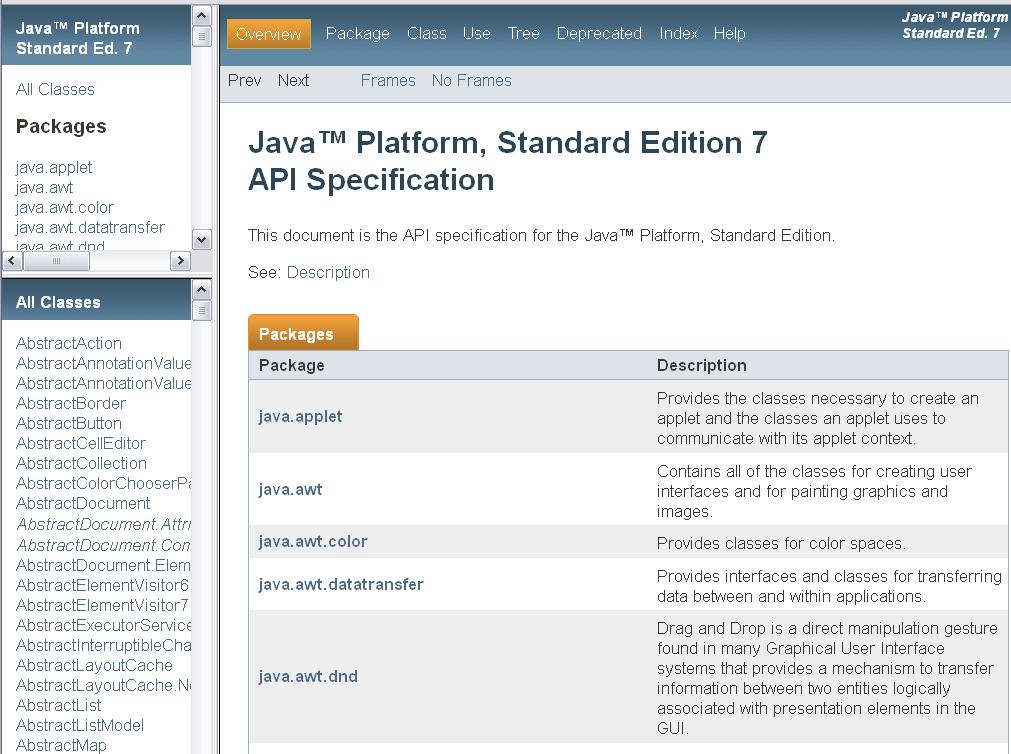| << Chapter < Page | Chapter >> Page > |
Top-level online documentation
As of the date of this writing, you can view the top-level page of the documentation for Java Platform Standard Edition 7 at (External Link) .
A complicated page
When you first view that documentation page, it may appear to be very complicated. Of all the material on the page, the most important is probably the Application Programming Interface (API) , which is currently available via a link on the right side of the page labeled Java SE API .
However, you should not ignore the links to other information available on the top-level page . Those links will often contain information that you need, and that information canmake you more efficient in using the API documentation.
Search
If you follow the Search link at the top of the page, you will arrive at a search engine page that gives you the ability to do a keyword search on the online documentation.
Downloading and installing Java
Of particular interest to most newcomers should be the links titled Installation Instructions and Java SE Downloads .
The Java Tutorials
Also very important is the link to The Java Tutorials . Once you reach those tutorials, of particular importance is the Path and CLASSPATH tutorial. (Many students trip on the path, the classpath, and the difference between the two.)
The API Specification is probably the most frequently used section of the entire documentation package.
A screen shot
Figure 1 shows a partial screen shot of what you should see when you first load the API Specification into your browser. (Note that this screen shot was cropped to force it to fit into this publication format.)
| Figure 1. Screen shot of the API specification at startup. |
|---|
 |
Screen layout
The purpose of providing this screen shot is to give you an idea of the general layout of the material as it appears on your screen. As you can see, thelayout consists of three frames when viewed in your HTML browser.
(A version without frames is also available by selecting the "No Frames" link at the top of the page. The version without frames is particularly usefulfor using the "page search" capability of your browser to find something on the page.)
The two leftmost frames
The upper-left frame contains a list of packages . The lower-left frame contains a list of the classes and interfaces that are contained in the package that is selected in the top-left frame.
(The default package selection in the upper-left frame is "All Classes".)
You make selections in these two frames (or in the link bar at the top of the page) to control the contents of the rightmost frame.
The rightmost frame
When you first access the API documentation (and when you select Overview at the top of the page), the rightmost frame contains summary information about all of the packages.
When you select a class in the lower-left frame (such as the JButton class for example) , the rightmost frame contains hyperlinked information about that class, including:

Notification Switch
Would you like to follow the 'Object-oriented programming (oop) with java' conversation and receive update notifications?